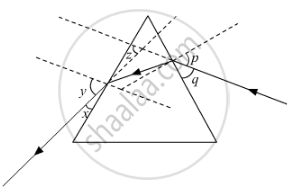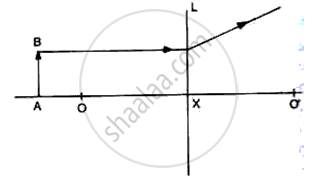Advertisements
Advertisements
प्रश्न
Make a rainbow
Try to make your own rainbow. You can try this project in the morning or in the evening. Stand with your back towards the Sun. Take a hosepipe or a water pipe used in the garden. Make a fine spray in front of you. You can see different colours of rainbow in the spray.
उत्तर
Make a Rainbow
Materials:
- Hosepipe or garden water pipe
- A sunny day (morning or evening is ideal)
Procedure:
- Stand with your back towards the Sun.
- Hold the hosepipe or garden water pipe in front of you.
- Turn on the water and create a fine spray by partially covering the nozzle with your thumb.
Observation:
- You will see different colours of the rainbow forming in the spray of water.
Explanation:
- When sunlight passes through the water droplets in the spray, it gets refracted, reflected, and dispersed.
- This process splits the sunlight into its constituent colours, forming a spectrum that appears as a rainbow.
Conclusion:
- By using a hosepipe to create a fine spray of water with the Sun behind you, you can observe the formation of a rainbow. This demonstrates the principles of refraction, reflection, and dispersion of light.
संबंधित प्रश्न
Study the following ray diagram:

In this diagram, the angle of incidence, the angle of emergence and the angle of deviation respectively have been represented by
(A) y, p, z
(B) x, q, z
(C) p, y, z
(D) p, z, y
The property of splitting of white light into its seven constituent colours is known as
You are given a disc divided into seven sectors with colours violet, indigo, blue, green, yellow, orange and red in them. What would be its colour when it is rotated rapidly?
Refer to fig
(i) Name the lens L.
(ii) What are the points O, O' called?
(iii) Complete the diagram to form the image of the object AB.
(iv) Write three characteristics of the image.

Write three conditions necessary to obtain a pure spectrum on a screen. Name the instrument in which the conditions stated by you are fulfilled.
State two properties of ultra-violet radiations which differ from visible light.
Name the scientist who was the first to use a glass prism to obtain the spectrum of sunlight.
Which one of the following is involved for the formation of rainbow in the sky?
Curved mirrors have surfaces that are spherical, cylindrical, parabolic, and ellipsoid.
When sunlight passes through water droplets in the atmosphere it gets dispersed into its constituent colours forming a rainbow. A similar phenomenon is observed when white light passes through a prism.
Which colour will show the maximum angle of deviation and which colour will show the minimum angle of deviation?
